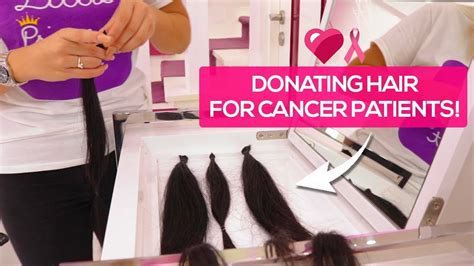Your hair holds immense potential beyond its aesthetic value. Donating your locks can bring joy to those in need while inspiring a sense of purpose within you. With countless organizations seeking hair donations, choosing the right one can be overwhelming. Here’s a comprehensive guide to help you find the best place to donate hair.

Top 5 Organizations for Hair Donation
Deciding where to donate your hair is a personal choice, influenced by factors such as:
- Mission and Values: Align your donation with an organization whose purpose resonates with you.
- Impact: Consider the reach and impact of the organization in supporting cancer patients or other beneficiaries.
- Transparency: Ensure the organization operates ethically and provides clear information about hair donation usage.
Based on these criteria, here are the top 5 hair donation organizations:
| Organization | Mission | Impact |
|---|---|---|
| Children With Hair Loss | Provides wigs and support to children experiencing hair loss from medical conditions | Over 1,300 children helped |
| Locks of Love | Creates custom wigs for children who have lost their hair due to medical treatments | 6,000 wigs donated annually |
| Pantene Beautiful Lengths | Partners with the American Cancer Society to provide free wigs to cancer patients | Over 1 million wigs donated |
| Wigs for Kids | Provides free, custom-made wigs to children under 18 experiencing hair loss | Over 100,000 wigs distributed |
| Hair We Share | Mission to recycle donated hair into wigs for those who have experienced hair loss | Up to 1,000 wigs created per year |
How to Prepare for Hair Donation
Before making your donation, follow these guidelines:
- Meet Length Requirements: Most organizations require hair donations to be at least 8-12 inches long.
- Wash and Dry Your Hair: Remove any styling products or dirt by thoroughly washing and drying your hair.
- Brush Out Tangles: Remove any tangles or mats with a brush or wide-toothed comb.
- Tie Your Hair into a Braid or Ponytail: Secure your hair with an elastic band or ribbon to prevent it from getting tangled during shipping.
- Cut Your Hair: Use sharp scissors to cut your hair above the elastic band.
Where to Send Your Donation
Once your hair is prepared, package it securely in a plastic bag or box and include the following information:
- Your Contact Information: Name, address, phone number, and email address
- Hair Donation Form: This is typically available on the organization’s website
Mail your donation to the address provided on the donation form.
FAQs about Hair Donation
Q: What types of hair are accepted?
A: Most organizations accept natural, unprocessed hair of any color or texture. However, bleached, dyed, chemically treated, or synthetic hair may not be suitable.
Q: How long will it take for my hair to grow back?
A: Hair typically grows about 0.5 inches per month. If you donate 12 inches of hair, it may take up to 24 months to return to its original length.
Q: Can I donate hair if I have a medical condition?
A: Some medical conditions may affect hair quality. Check with the recipient organization for specific requirements.
Q: Are there any tax benefits for donating hair?
A: Hair donations are generally not tax-deductible in the United States.
Give the Gift of Confidence
By donating your hair, you not only give to others but also invest in their self-esteem and well-being. The transformative power of a wig can restore confidence and hope to those experiencing hair loss. As you consider your hair donation, remember that your locks have the potential to make a real difference in someone’s life.
Additional Considerations
In addition to the top 5 organizations listed above, several other reputable hair donation organizations exist. When selecting one, consider the following:
- Specializations: Some organizations focus on specific types of hair loss or beneficiaries.
- Shipping Fees: Determine if the organization charges any fees for shipping your donation.
- Online Reviews: Read testimonials and reviews to gain insights into others’ experiences.
- Mission and Values: Ensure the organization aligns with your personal values and beliefs.
Conclusion
Donating your hair is a selfless act that can bring immense joy and transformative change to those in need. By choosing a reputable organization and following the guidelines, you can play a meaningful role in the lives of others. Remember, your hair holds the power to give back and make a difference. Embrace this opportunity to give the gift of confidence and hope.
